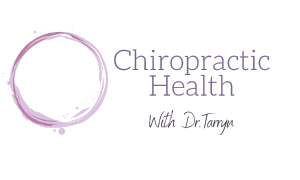
Getting Started with Chiropractic Care: What to expect
Dec 22, 2024You've already taken the first step which matters the most. You've made a decision to take charge of your health so you're already heading in the right direction.
Chiropractic care is more than 100 years old, and offers a natural, non-invasive medication free approach to improving your health and well-being. Whether you're looking to finally get on top of your chronic pain, recovering from an injury or looking for more performance as an athlete, chiropractic care can be an important piece of that puzzle.
What to Expect During Your First Visit
Ignore the clips you've seen on the internet about what Chiropractic Care is. It's not all cracking and snapping and people jumping on your back (the reality is abit more anticlimactic and less terrifying I promise).
Chiropractic care done our way involves evidence based health care, which means you'll get:
1. A comprehensive assessment
This means talking about your health history, your work and home life, lifestyle, activities and specific concerns. This is your opportunity to talk about any past injuries, chronic conditions or what you want to achieve from care. This allows me to consider how I can best support you and to make sure Chiropractic is appropriate for you.
2. A Physical Examination
In your first visit you'll be assessed and taken through some physical assessments. This might look like a spinal assessment or some joint assessments, range of motion evaluations, orthopaedic or neurological assessments depending on what shows up during the evaluation.
The assessments help me to figure out how your body is moving, where there are areas of dysfunction and specific joints or muscles that are causing or linked to your underlying problem.
3. Treatment and an Individualised Care Plan
Based on your consultation and examination, you'll receive your first treatment. Your bodies' response to treatment as well as the findings from the physical examination help me to determine the best plan of management to help you to achieve your health goals.
I'll usually talk to you about techniques, what kind of treatment you'll need and some simple recommendations for how much care you might need and how long it might take to see and notice changes.
Everyone responds differently, so we will talk about post-treatment expectations and then arrange a follow up where we can solidify the care plan together as a team.
Your First Adjustment and Treatment
We do longer sessions at Chiropractic Health and a normal treatment takes approximately 25 minutes. During this time treatment might include the following:
- Soft Tissue therapy including some massage or trigger point therapy. We may also utilise a theragun.
- Stretches or mobilisations of joints including shoulders, hips, knees, ankles, elbows and wrists.
- Adjustments or mobilisations: With the table drop piece, Activator or by hand. You may sometimes hear a "popping" sound which is simply gas bubbles being released from the joint spaces and is completely harmless.
- Rehabilitation or post-adjustment care including lifestyle advice or recommendations.
Most people report feeling relief, symptomatic improvement, increased mobility and even lightness after an adjustment. It's a unique experience and differs from person to person, and techniques and treatments may differ depending on your preference and response.
Optimal Results After Treatment
There are a few simple steps that can help you maximise the benefits after your adjustment and help you support your recovery:
1. Walking around the block before you drive home
Movement helps override pain information, and also helps the joints send information to the brain about changes that are occurring through the various parts of your spine. A 5 minute walk after your adjustment before you drive home will help you to get the most out of your adjustment and can help your body to settle into the adjustment more quickly
2. Drinking Water
Our bodies are primarily water. Being hydrated helps your body to more easily flush waste products and to break down hormones and chemicals that may have been within the muscles and joints. Drink a couple of glasses of water after your adjustment and that will help you recover post adjustment.
3. Notice changes
An adjustment is a completely individual experience. Depending on your issue and how long it has been there for, your health recovery journey is likely to have some ups and downs. Some side affects including tightness in a new area, some muscle soreness or even a mild headache or some stiffness is not unusual if you have had an issue for awhile. Noticing those changes can help with better tailoring treatment for you and really speeds up the recovery journey.
Trust that your body is giving you feedback that will continue to help you to improve in the long run, and that change is good: both when you feel great after an adjustment, but also when you notice pain moving locations or changing.
Long-Term Benefits
Regular chiropractic care can contribute to sustained improvements in pain management, improvements in posture and overall function.
A study published in The BMJ found that spinal manipulative therapy (SMT) can provide modest improvements in pain and function for individuals with chronic low back pain. This highlights chiropractic care as a valuable option for managing one of the most common musculoskeletal complaints. (The BMJ, 2019)


